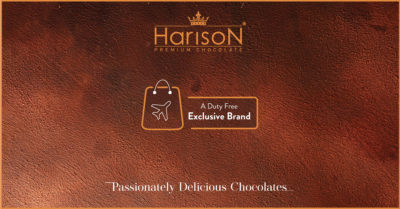Confectionery is travel retail’s “sweet spot” according to Hamilton Sargent from travel retail specialists Blackjack Promotions.
He is correct. While the larger core categories such as beauty, alcohol or perfume and cosmetics may take the larger share of the market, the confectionery category has an unparalleled scope for innovation and growth within our sector.
This view is not new. Indeed it is being very widely discussed around the market today, with some of the industry’s biggest players citing plans for the category to double and be worth $10bn in the next 10 years.
The power and importance of confectionery to travel retail today is evident from its current value – in 2018, the confectionery market was worth about $2.5bn to travel retail in Europe alone. On top of that, the Asia Pacific market is already the second biggest in the world, valued at $1.2bn in 2018 despite being a relatively young confectionery market with incredible potential for growth and development.
These figures show the current monetary value of the category to our market, but they do not do justice to both the potential of confectionery and the benefits it brings to the wider travel retail industry. Figures from m1nd-set show that there is a 52% to 48% split between planned purchases and impulse purchases among travel retail confectionery shoppers today.
With almost a third of shoppers also buying for “self-gifting” this means travel retail has in confectionery a category which is drawing in new shoppers who are looking to be inspired by what they find once they step through the door. This impulsive purchasing behaviour can be harnessed by the wider market to increase penetration and provide a solution to travel retail’s falling spend-per-passenger.
The confectionery market has a wide appeal and that is only growing with the constant wave of innovation and development coming from across our sector as new flavours and products are being created. This is not just creative ways of packaging and presenting products, but new on-trend tastes and textures, which mean our sector is always shifting and expanding.
Harison Chocolate is a perfect example of this. Created exclusively for the travel retail sector, the brand offers something shoppers cannot find anywhere else. Using top-quality recipes developed from the best of Belgian, Italian and Swiss chocolate, Harison is a brand which provides those impulse shoppers with something special for themselves or loved ones which they cannot find anywhere else. Such a discovery ignites a passion which can benefit the whole market.

The keys to unlocking this potential is through visibility and space. Retailers must give brands the opportunity to not just innovate, but introduce and educate customers about what is new and special within our very unique market. If we want to make the most of impulse shoppers, or seize the chance to increase basket size, then we must allow brands to engage shoppers themselves. Creating this space and opportunity is an investment in a potentially very lucrative future.
But that call to action is not just for retailers. Brands must seek to constantly wow consumers with new, innovative, exciting and exclusive releases which make the most of the space they call out for. Shelf space is at a premium and where it is provided, it is criminal to fill it with more of the same.
Sargent was also correct when he said travel retail offers a perfect opportunity to try new ideas. Our market has the scope to reach new shoppers, creating customers and brand ambassadors who will return and shop, creating a future which benefits us all.
